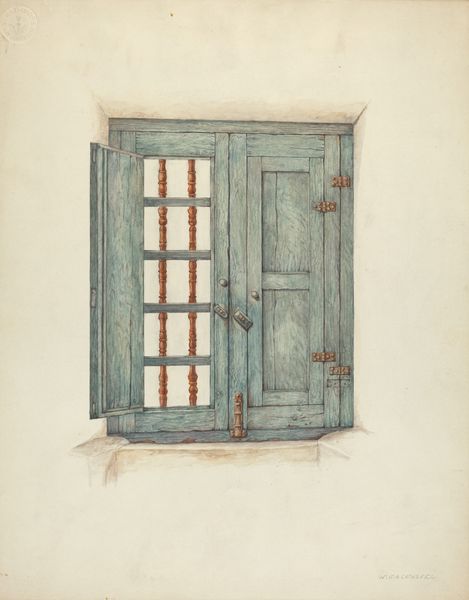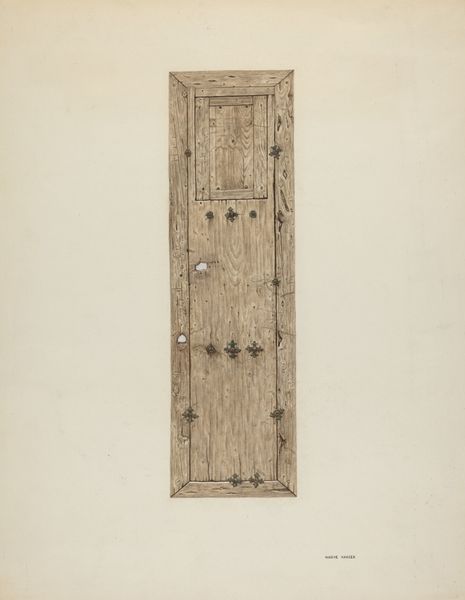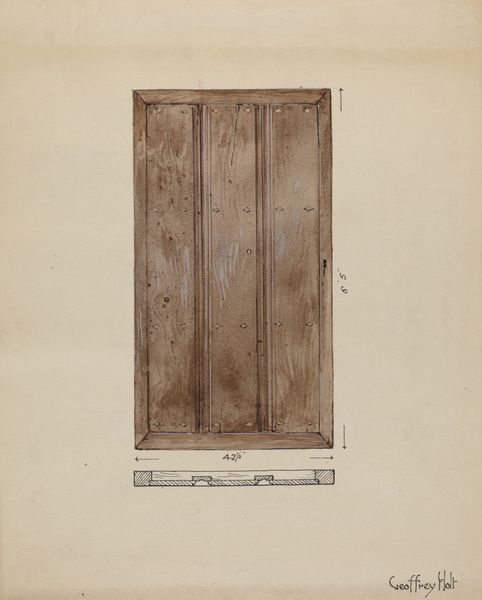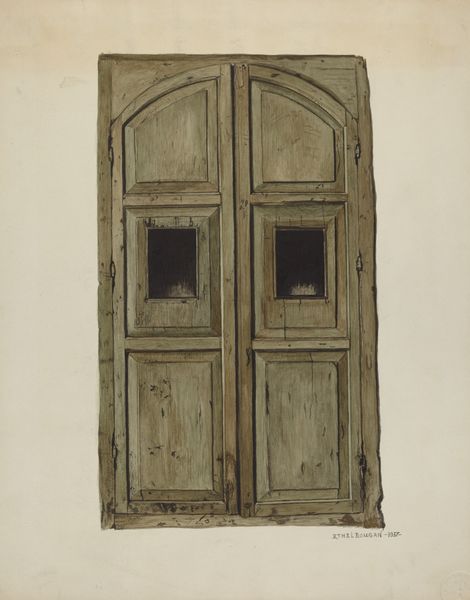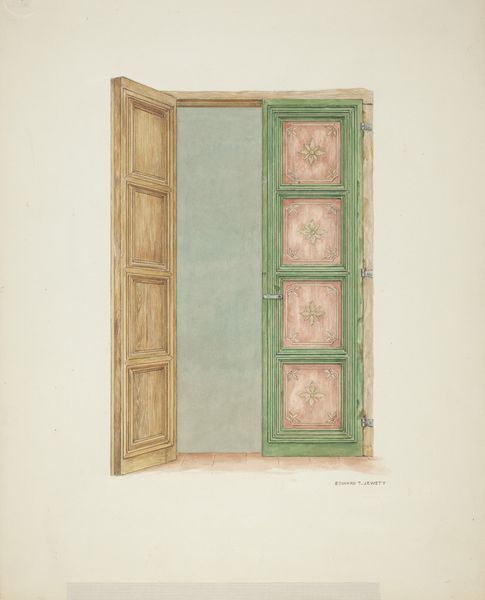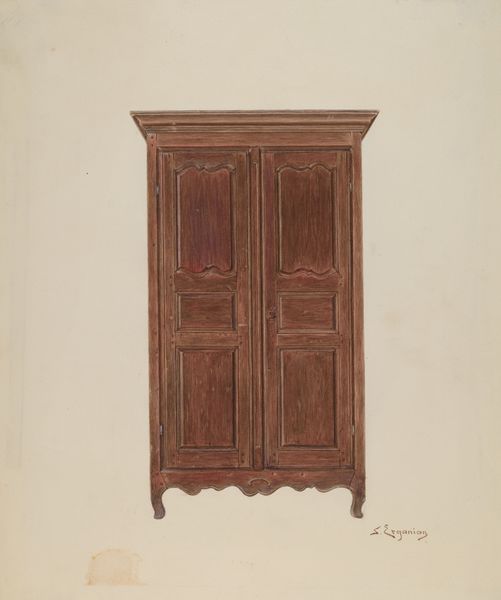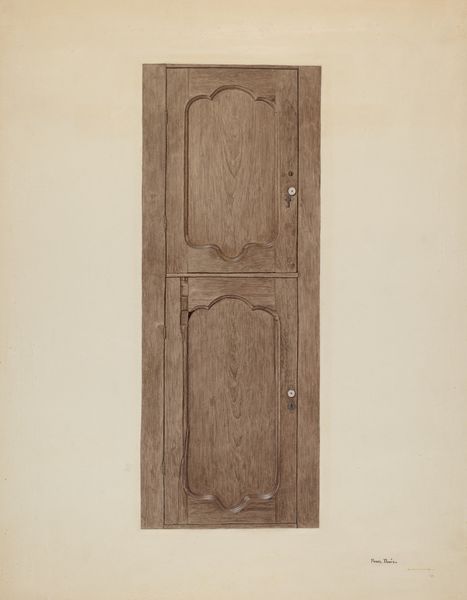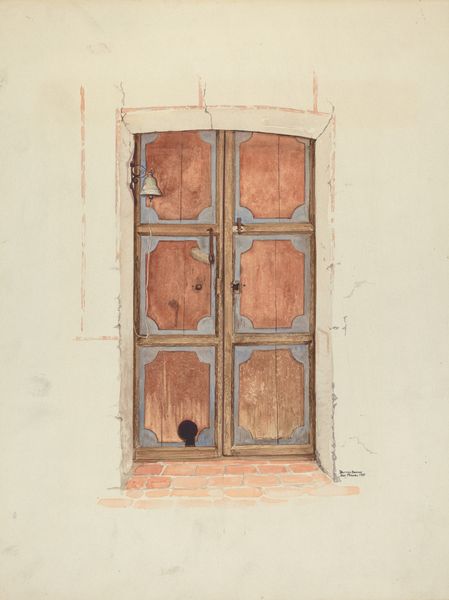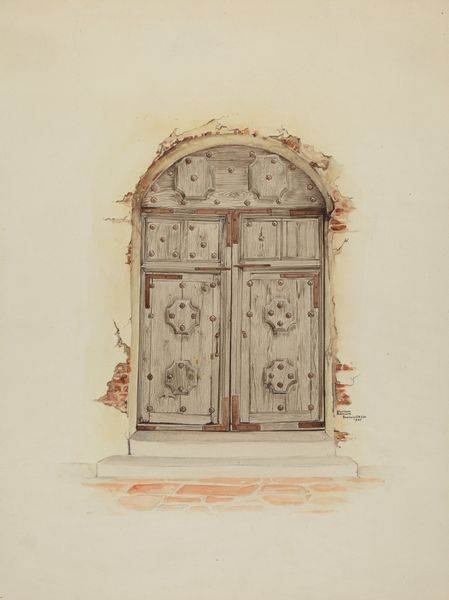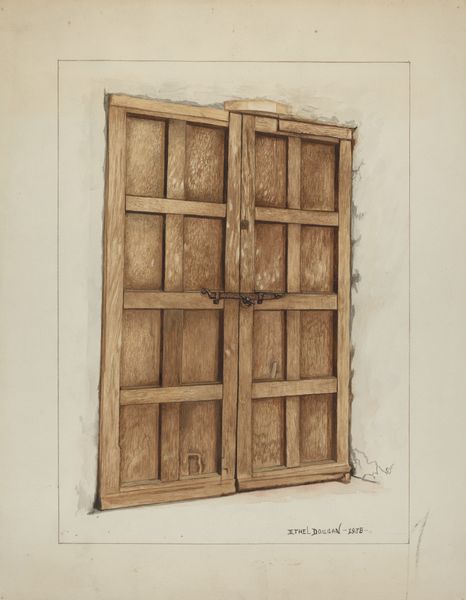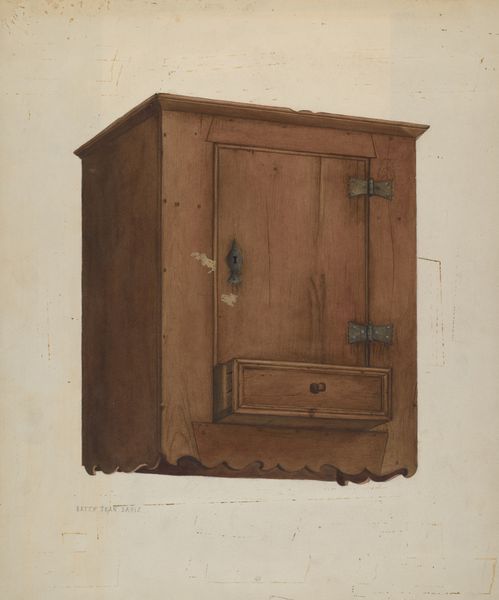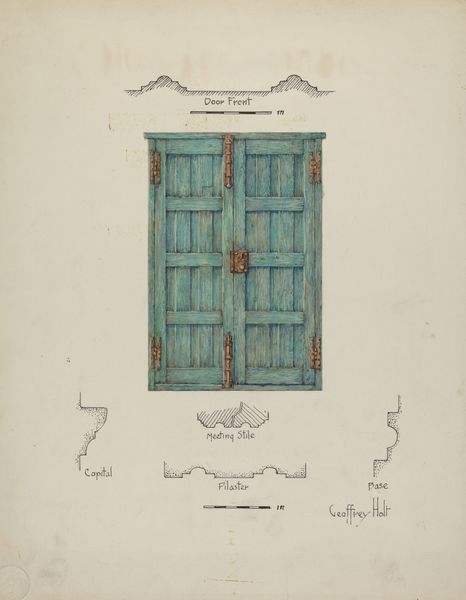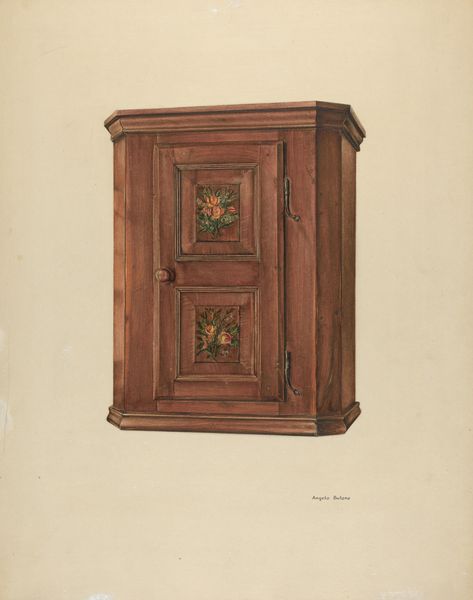
drawing, watercolor, pencil, wood
#
drawing
#
water colours
#
watercolor
#
coloured pencil
#
pencil
#
wood
#
watercolor
#
realism
Dimensions: overall: 35.4 x 27.9 cm (13 15/16 x 11 in.) Original IAD Object: 53" x 32 1/4"
Copyright: National Gallery of Art: CC0 1.0
Curator: Edward Jewett's "Painted Wooden Shutter," created in 1937, offers us a close view of architectural detail rendered with delicate precision. Editor: My immediate reaction is one of tranquility; there's a quiet stillness to this depiction. I’m drawn to the way the muted green trim and aged wood suggest a sense of history and perhaps untold stories within a domestic space. Curator: Note the artist's adept use of watercolor and pencil to capture the wood's texture and the subtle gradations of light across its surface. The composition focuses our attention entirely on the shutter, devoid of background context, isolating it as an object of contemplation. Editor: Considering this work emerged in 1937, I wonder about the cultural climate. Was Jewett perhaps drawn to the subject because it symbolized privacy and shelter during a period of economic hardship? These simple shutters suggest more than just aesthetics; they possibly speak to resilience and protection. Curator: It’s also compelling to consider the inherent formalism at play here. Observe the symmetry achieved despite the depicted aging and imperfections in the shutters themselves, the lines all directing us to the latches and aged hinges. Editor: Absolutely. The careful representation invites deeper reflection. Given the potential racial segregation within American society during the 1930s, the shutter could also represent a literal barrier, or demarcation, between communities. We could study it in light of urban planning policies. Curator: Your perspective casts it in such a different and enlightening light. Regardless of its broader significance, Jewett's mastery of technique, in the end, highlights how the formal elements of an image can convey profound depths. Editor: And through that technique, those visual properties, perhaps, we begin to question the silent narratives of the everyday spaces these architectural elements would guard.
Comments
No comments
Be the first to comment and join the conversation on the ultimate creative platform.
